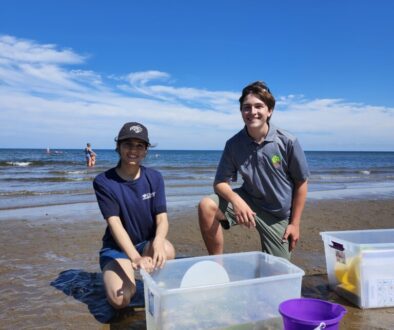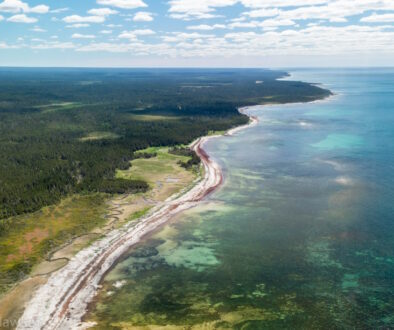Biodiversity loss, the climate crisis, and why we need to act now
Written by Sandra Bender
If you care about the planet’s survival, you need to know about biodiversity and its important relationship to climate change.

Biodiversity encompasses all of the genes, species, and ecosystems that make up life on this planet, including humans. It includes all of the flora and fauna across terrestrial, marine, and other aquatic environments. Simply put, biodiversity is the basis of life on earth.
If our planet’s biodiversity is in poor health, we are in trouble. Biodiversity provides clean air, water, soil, food, resources and many other “ecosystem services” that we all need to survive. Wildlife and the ecosystems they live in help to capture carbon and help environments to adapt to extreme situations like flooding, fires, and drought. These services are crucial in this time of climate crisis.
This May, the United Nations IPBES—Intergovernmental Science-Policy Platform on Biodiversity and Ecosystem Services, released a report that paints a grim picture of the present state of global biodiversity, and the future looking worse if we do not act now. According to the report, scientific evidence shows that ecosystems, species, and wild populations are shrinking, weakening, or vanishing more rapidly and to a greater extent than ever before1. What is the main cause of this fast and threatening biodiversity loss? It’s quite simple: human activities.

Human-caused climate change is one of the top three biggest drivers of global biodiversity loss, and its impact is only expected to increase1. Many of the current targets proposed by countries to reduce the carbon-emitting activities causing climate change, including Canada, are not sufficient to reduce climate change impacts. Between 20% and 30% of plant and animal species are likely to be at an increased risk of extinction if the global average temperature change exceeds 1.5-2°C1. In Canada, average temperatures are rising two times as fast as the rest of the world, with changes in Canada’s north seeing increases closer to three times the global average2.
If we continue on our present path, the damage will continue and will likely be irreparable—but there is hope! Since human activity is a direct cause of both climate change and global biodiversity loss, if we act quickly, we can have a future full of healthy wildlife and sustainable ecosystems.
Protecting wilderness areas is a critical step in mitigating climate change and preserving biodiversity. Wilderness areas can include critical habitats of at-risk species and can provide connectivity within and across ecosystems important for species survival. They also include important ecosystems like forests and wetlands that capture and store carbon. Forests and wetlands also provide crucial buffers to extreme storms and flooding caused by climate change, and these ecosystems function best, and are more resilient to the effects of climate change, when biodiversity is intact.

Environment Canada has estimated the number of eco-regions at high risk for biodiversity loss in Canada. Of the 177 eco-regions identified, 14 – or 7% of Canada – are considered to be at high risk of losing the plants and animals that support healthy ecosystems3. Canada is in desperate need of more protected areas if we are to limit the impacts of climate change to wildlife, wilderness, and our local communities.
The advantages for species in protected wilderness areas are real. Research shows that plant and animal populations are larger inside protected areas, and more types of species are found inside their boundaries compared to surrounding areas. In Canada, some of our least protected areas are the most important for species at risk of extinction, for carbon storage, and for adaptation to climate change4. A recent announcement by the New Brunswick government to protect 10% of the province’s nature by 2020 is a welcome first step in bringing it in line with other provinces in Canada5.
Now, more than ever, we need to protect our wilderness. The planet’s survival may depend on it.
Help us keep the positive momentum going! Send a letter to your local representative to keep their promise of protecting 10% by 2020.
Read more about New Brunswick biodiversity initiatives here.
Check out our blog on Canada’s biodiversity goals here.
References:
1 Intergovernmental Science-Policy Platform on Biodiversity and Ecosystem Services/IPBES. (2019). UN Report: Nature’s Dangerous Decline ‘Unprecedented’; ‘Species Extinction Rates Accelarating’. Accessed November 12, 2019 from: https://www.un.org/sustainabledevelopment/blog/2019/05/nature-decline-unprecedented-report/
2 Bush, E. and Lemmen, D.S., editors (2019): Canada’s Changing Climate Report; Government of Canada, Ottawa, ON. 444 p. Accessed November 12, 2019 from: https://changingclimate.ca/CCCR2019/
3 Bourdages, J.-L. & Labelle, C. (2003). Protecting wild species at risk in Canada. Science and Technology Division, PRB 00-19E. Accessed November 12, 2019 from: http://publications.gc.ca/Collection-R/LoPBdP/BP/prb0019-e.htm#introtxt
4 World Wildlife Fund Canada. (2019). Wildlife protection assessment: A national habitat crisis. Accessed November 12, 2019 from http://www.wwf.ca/wildlife_protection_assessment.cfm
5 CBC News. (2019). New Brunswick plans to double amount of protected natural areas before Accessed November 12, 2019 from: https://www.cbc.ca/news/canada/new-brunswick/double-conservation-natural-areas-new-brunswick-1.5338670



